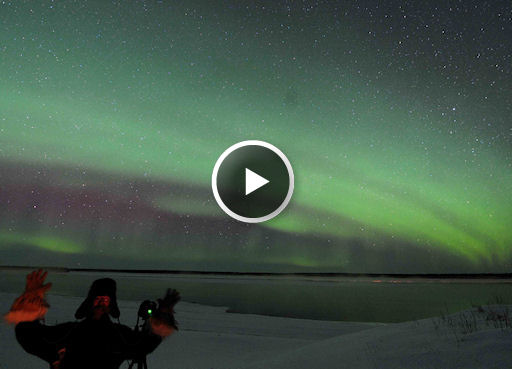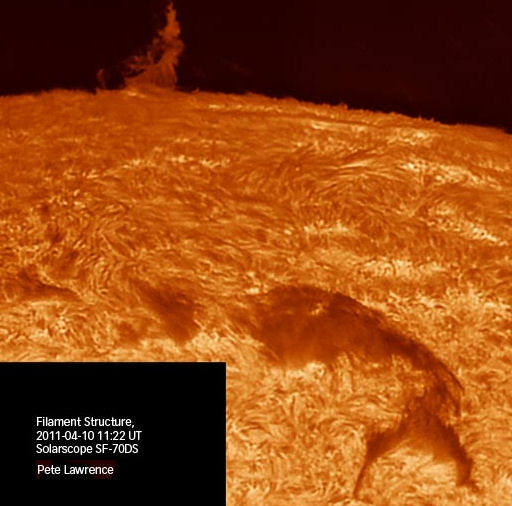Metallic photos of the sun by renowned photographer Greg Piepol bring together the best of art and science. Buy one or a whole set. They make a stellar gift. | | |
AROUND THE BEND: A coronal mass ejection (snapshot) observed today by the SOHO spacecraft heralds the approach of an active region to the Earthside of the sun. The source of the blast is currently located behind the sun's northeastern limb, but solar rotation will turn it in our direction in the days ahead.
AURORAS IN MOTION: So far, April has been a good month for Northern Lights. Almost every night, bright auroras have been dancing around the Arctic Circle--really dancing. Click on the arrow to view a 5 MB video of auroras in motion over Quebec's Lagrande river on April 7th:

To make the video, photographer Michel Tournay (pictured above) assembled more than 800 pictures taken with his Nikon D3s. "I especially like the moment where the aurora became very intense for a few seconds showing some smoke on the river," says Tourney. "Normally I would have edited out that part because the aurora was over exposed, but I wanted to show how the scenery got illuminated by it!"
More auroras are possible tonight. NOAA forecasters estimate a 40% chance of geomagnetic activity during the next 48 hours, when a solar wind stream is expected to buffet Earth's magnetic field. A coronal mass ejection (movie) detected by NASA's STEREO probes on April 9th could also reach Earth and contribute to a possible display on April 11th. Aurora alerts: voice, text.
April 2011 Aurora Gallery
[previous Aprils: 2010, 2009, 2008, 2007, 2006, 2005, 2004, 2003, 2002]
SOLAR NEPHELOCOCCYGIA: It's a noun. Nephelococcygia: The act of seeking and finding shapes in clouds. Today in Selsey, UK, Pete Lawrence set up his solar telescope and performed nephelococcygia on the sun. "I think I found a fish," he says.

The fish-shaped form at the base of the image is a cloud of plasma held above the stellar surface by magnetic fields. It looks dark because it is cooler than the inferno below. Readers with solar telescopes are encouraged to monitor this fishy form--and learn to pronounce nephelococcygia.
more images: from Cai-Uso Wohler of Bispingen, Germany
April 2011 Aurora Gallery
[previous Aprils: 2010, 2009, 2008, 2007, 2006, 2005, 2004, 2003, 2002]

